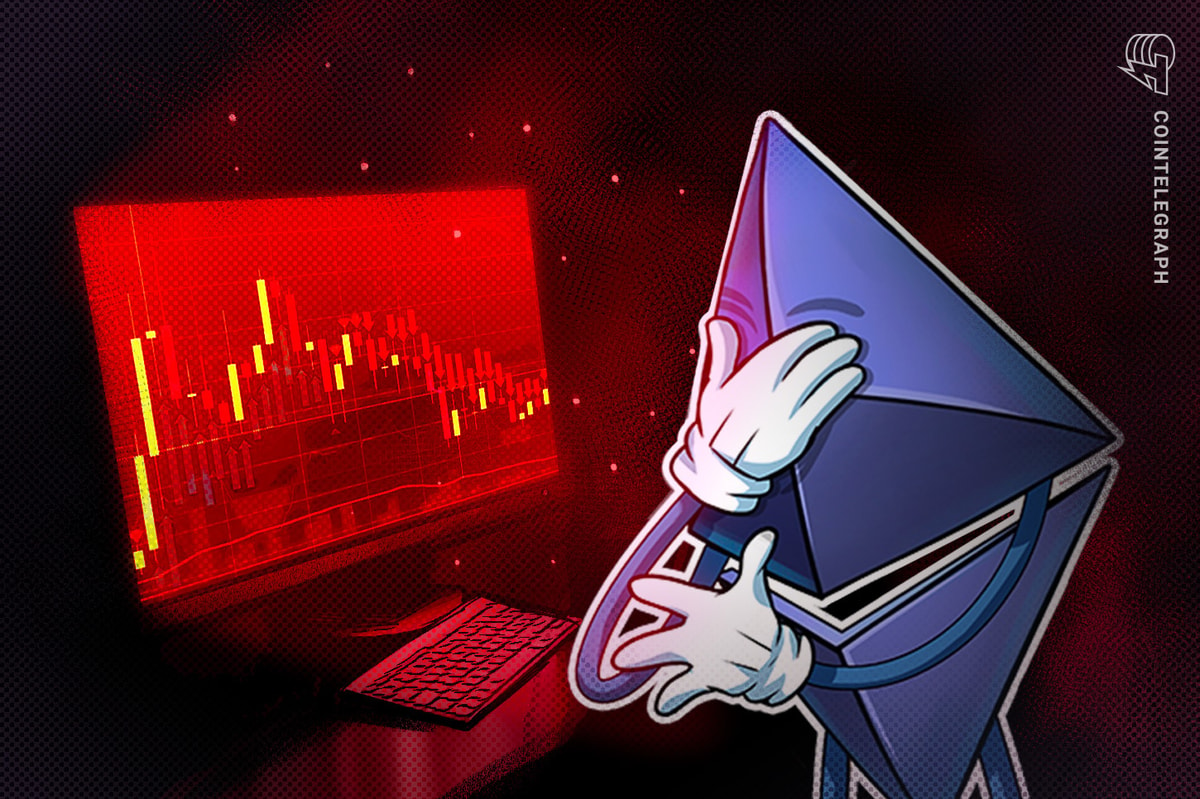Ethereum’s Resilience: A Closer Look at Ether’s Market Valuation
Despite Ether (ETH) trading at around half its all-time high of nearly $4,900, set in mid-November 2021, the Ethereum network continues to hold a remarkable market capitalization of approximately $252 billion. This figure places Ethereum’s value above many renowned corporations, such as Toyota, which is valued at around $250 billion, and even surpasses the total market value of precious metals like platinum, estimated at $245 billion.
At the time of writing, Ether is trading at approximately $2,088, a significant decrease of over 57% from its peak. This depreciation in price has not, however, significantly dampened the confidence of investors and enthusiasts in Ethereum as a leading digital infrastructure.
Comparison with Major Corporations
If Ethereum were classified as a traditional company, it would rank as the fiftieth largest globally, closely following Nestlé with a market cap nearing $256 billion. Other notable corporations such as IBM, McDonald’s, General Electric, Shell, and Disney are also below Ethereum’s market valuation. Such statistics illustrate the immense growth Ethereum has experienced and highlight its significance within the broader economic landscape.
Speculation and Infrastructure
The valuation of Ethereum is fueled by speculative interest driven by its promise of the future. Alex Obchakevich, founder of Obchakevich Research, emphasized that Ethereum represents a pioneering shift away from the conventional financial frameworks. He remarked that the project attracts a wave of young investors eager to embrace new technologies, choosing to invest in Ethereum over established entities like Toyota or IBM.
Conversely, Flavio Bianchi, a Polkadot ambassador, points out that Ethereum should not be viewed merely through the lens of corporate metrics. He notes that Ethereum functions as crucial infrastructure rather than a traditional business. The value of Ethereum stems not from revenue generation but from its utility and the confidence in its prospective role within the future economy. Bianchi highlights that Ethereum enables individuals to build, transact, and coordinate without the need for intermediaries, a feature that enhances its appeal to investors and developers alike.
Ethereum’s Transition to Proof-of-Stake
The transition to a proof-of-stake (PoS) consensus mechanism has further bolstered Ethereum’s attractiveness. With PoS, Ethereum’s status as a deflationary asset is reinforced, potentially increasing its value in a digital economy. This transition means that the issuance of new Ether is now more controlled, paralleling decreasing supply with network demand.
Deflationary Dynamics and Recent Data
Recent data from Ultra Sound Money indicates that Ethereum’s inflation rate has rebounded to about 0.73% annually, showcasing the complex dynamics of Ether’s market. The inflationary state is influenced significantly by transaction fees on the network, which have been subject to fluctuations since the implementation of the Ethereum Improvement Proposal 1559 (EIP-1559) in 2021. EIP-1559 introduced a mechanism for burning fees, which, during periods of high network activity, could induce a deflationary effect.
However, with transaction fees plummeting recently—reportedly falling to about $337,000—the inflationary pressures are becoming more pronounced, clouding the deflationary narrative Ethereum developed during its peak activity periods in the last few years.
Ethereum’s Market Capitalization vs. Global Economies
The current market capitalization of Ethereum not only eclipses prominent companies but also compares favorably with entire nations’ economies. Ethereum’s value surpasses Greece’s GDP, which stands around $243.5 billion, alongside the combined GDPs of countries such as Slovenia and Croatia. This comparison signals a paradigm shift, suggesting that digital infrastructure is becoming increasingly recognized as a fundamental component of the global economic framework.
Institutional Perspectives
Investment perspectives are evolving as institutional entities begin viewing Ethereum and similar blockchain technologies as legitimate assets. Obchakevich pointed out that Ethereum is valued particularly for its capabilities in smart contracts and decentralized finance (DeFi), with a total value locked (TVL) in DeFi exceeding $124 billion. This recognition highlights a shift from mere speculation towards acknowledging Ethereum’s potential as critical infrastructure for future economic activities.
Pradeep Singh, CEO of Gateway FM, draws attention to this fundamental shift in valuation. He asserts that Ethereum’s growing market capitalization reflects the ongoing migration of significant sectors of the global economy towards digital infrastructure, positioning Ethereum as a possible settlement layer for diverse applications, from financial services to supply chain management.
Continuous Evolution of the Ethereum Protocol
As Ethereum remains a cornerstone of the blockchain ecosystem, it continues to evolve, with developers introducing innovations to expand its capabilities and address scalability issues. The introduction of features like native rollups seeks to enhance its utility and redefine its role within the financial and digital landscapes.
In summary, Ethereum’s journey from its all-time high to a significant market capitalization, surpassing numerous well-known corporations, is a testament to its resilient infrastructure and transformative potential. As it develops and adapts, Ethereum continues to captivate the attention of investors, developers, and analysts alike, signaling a promising horizon for digital assets.

